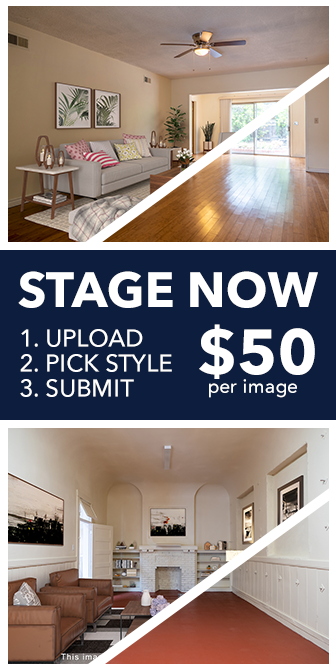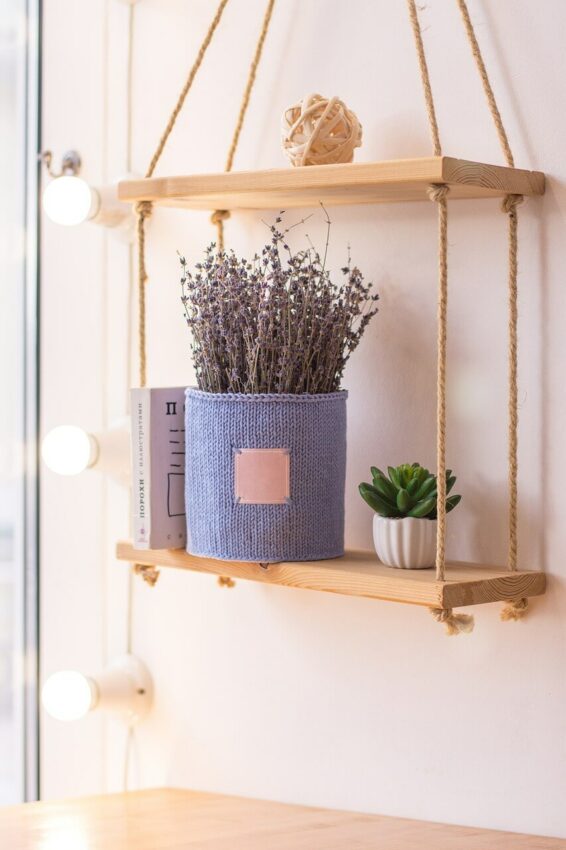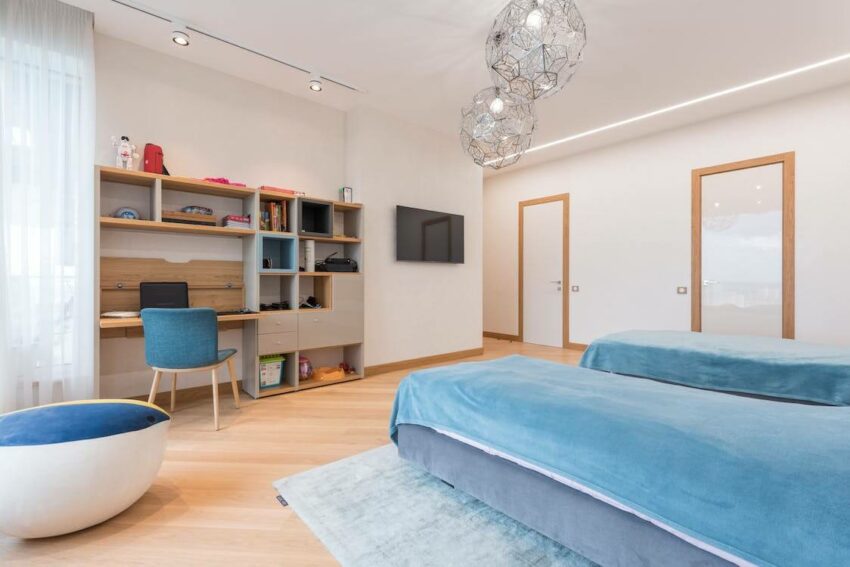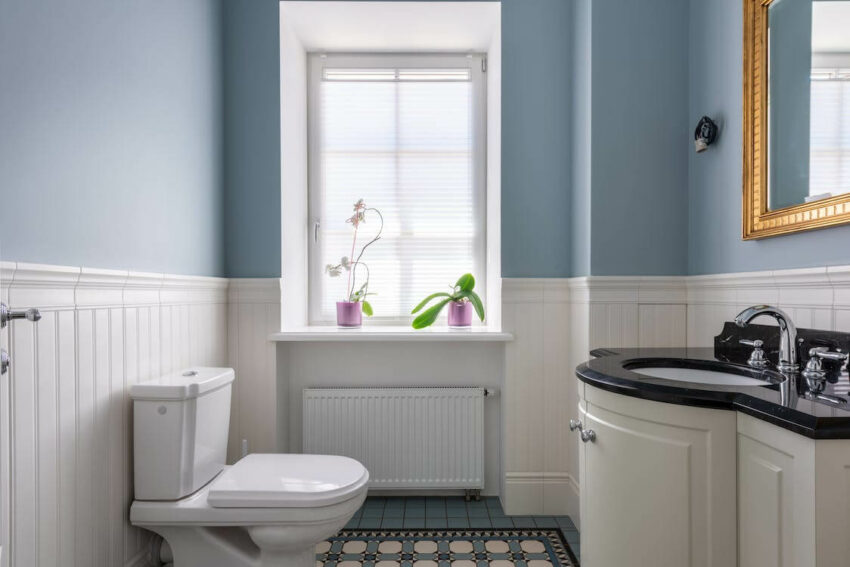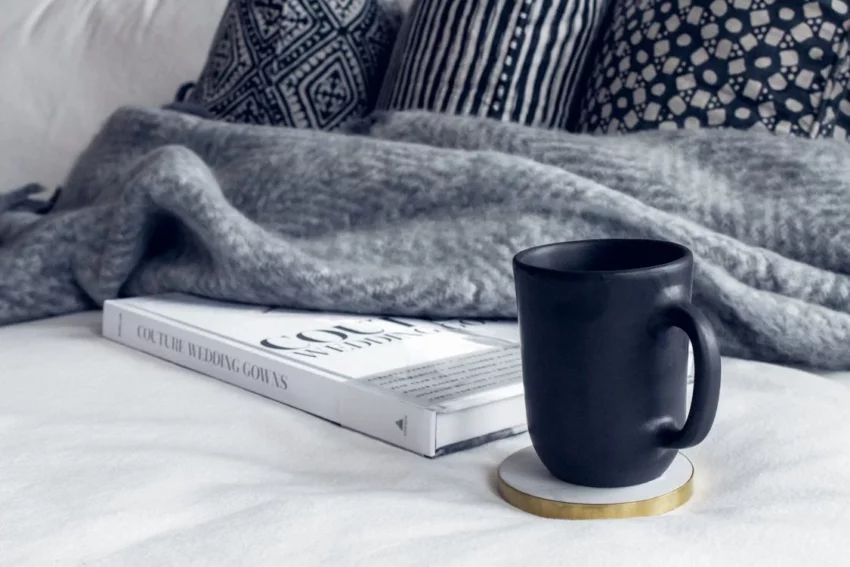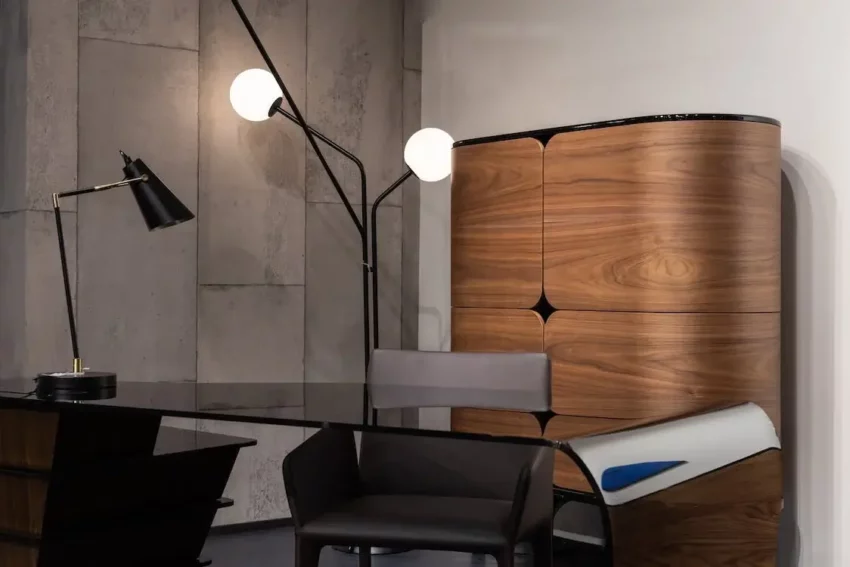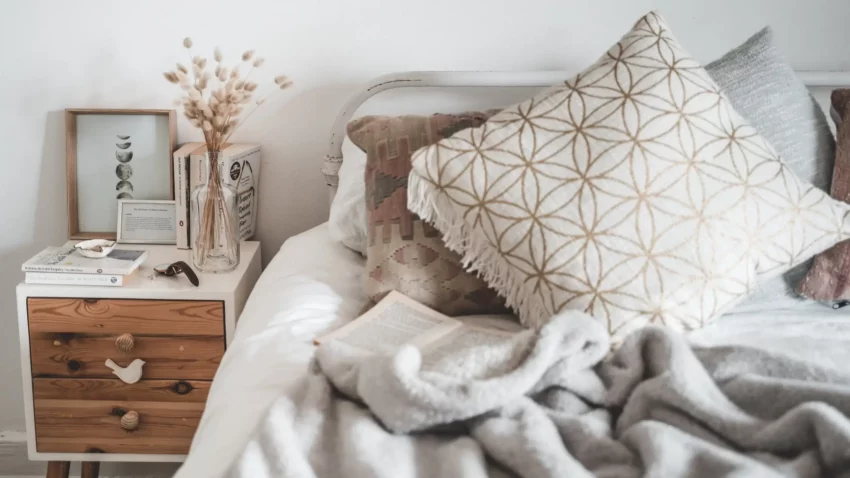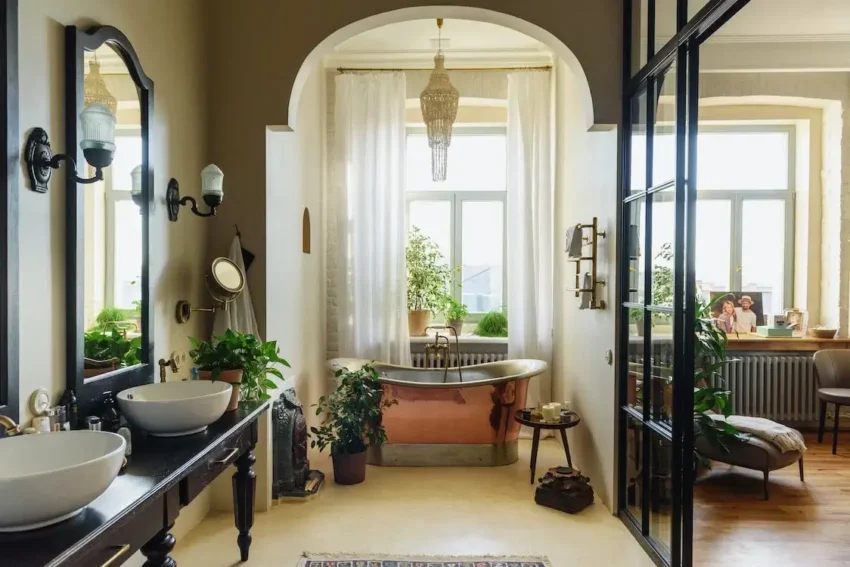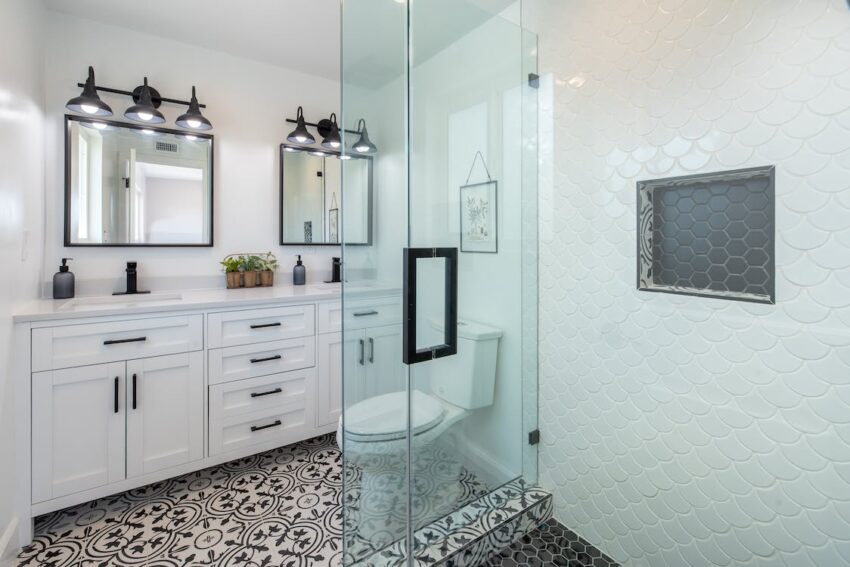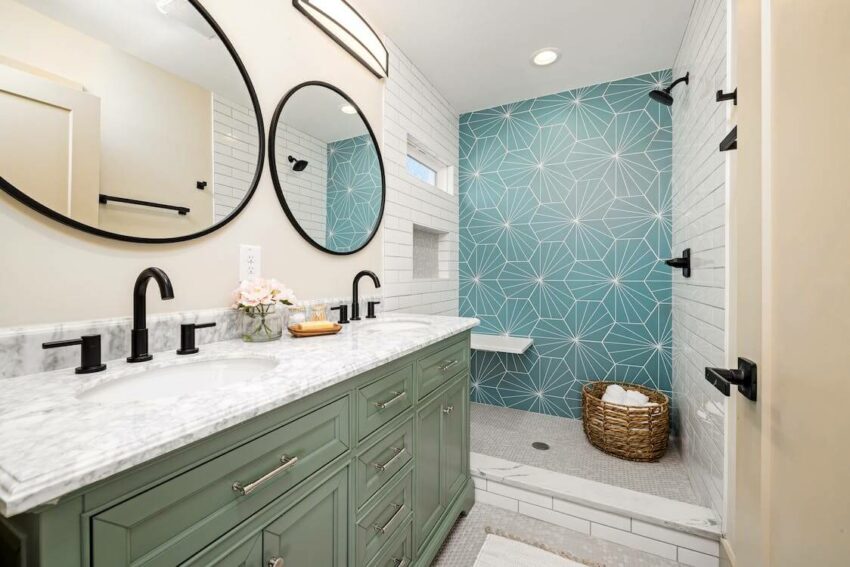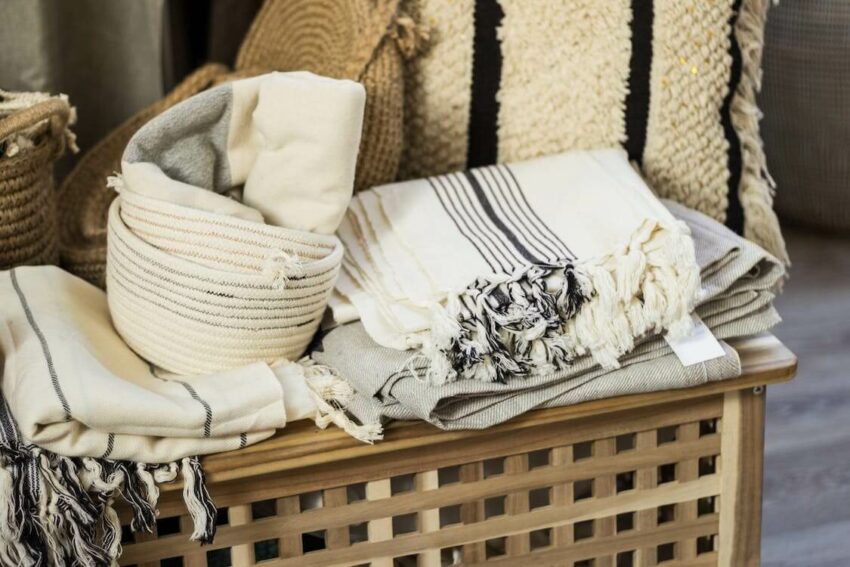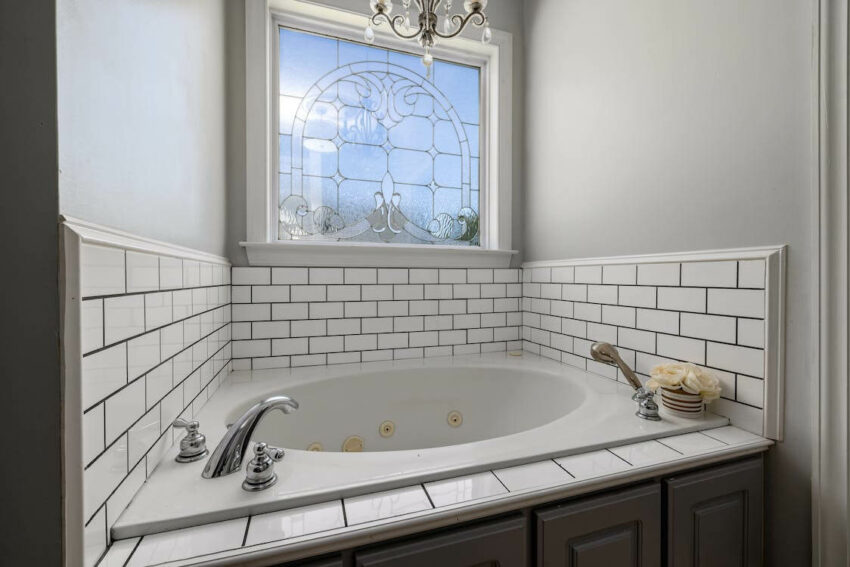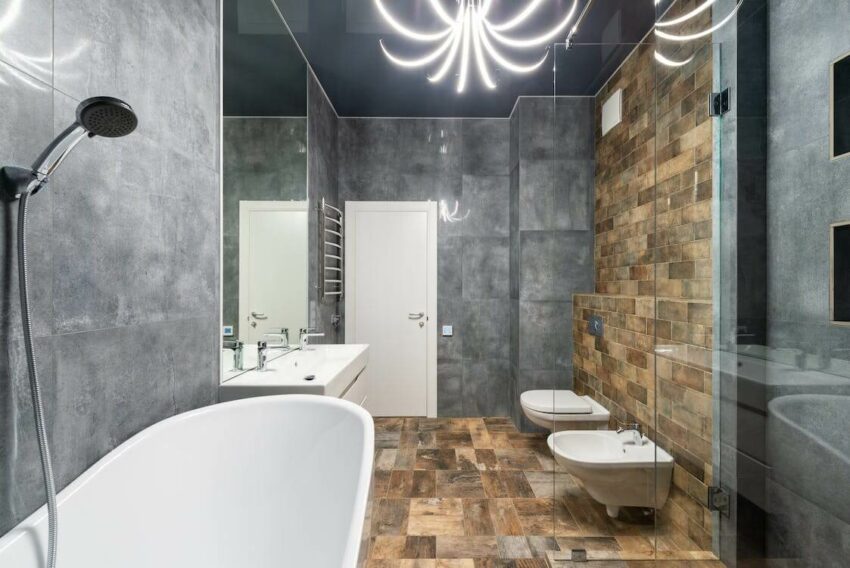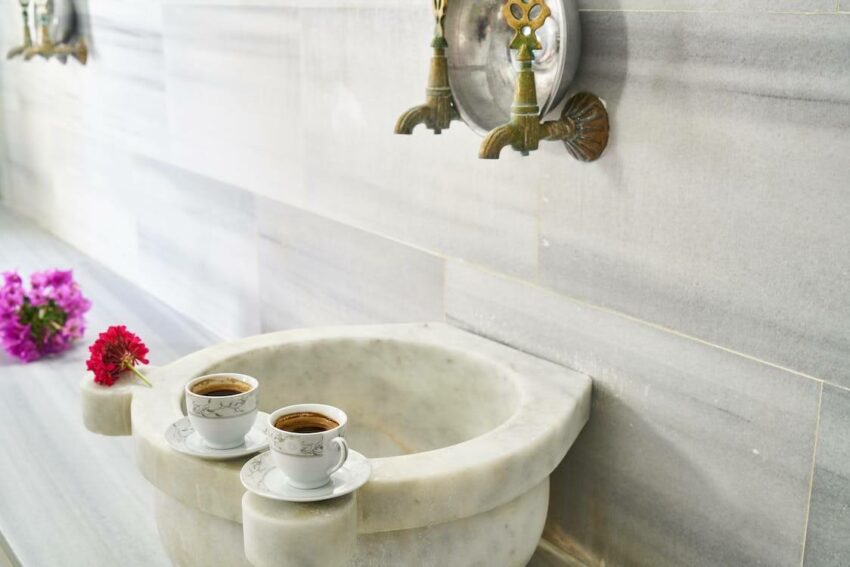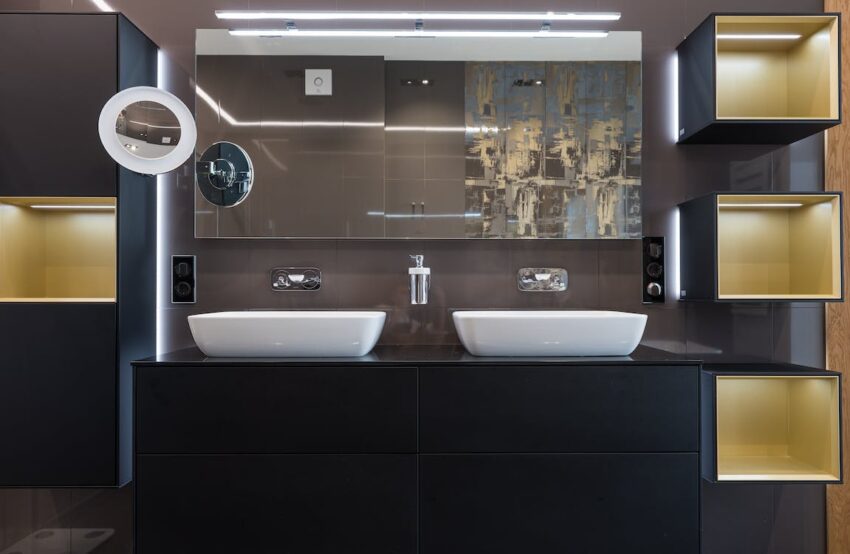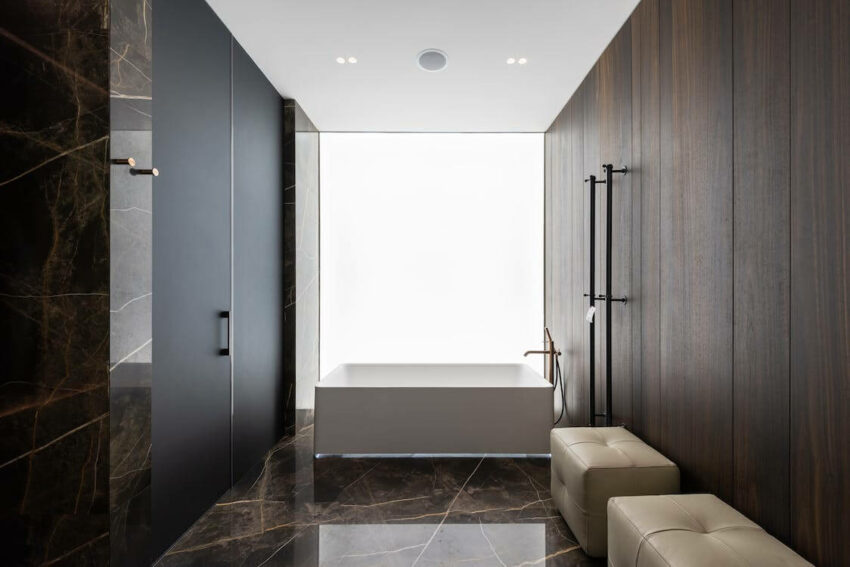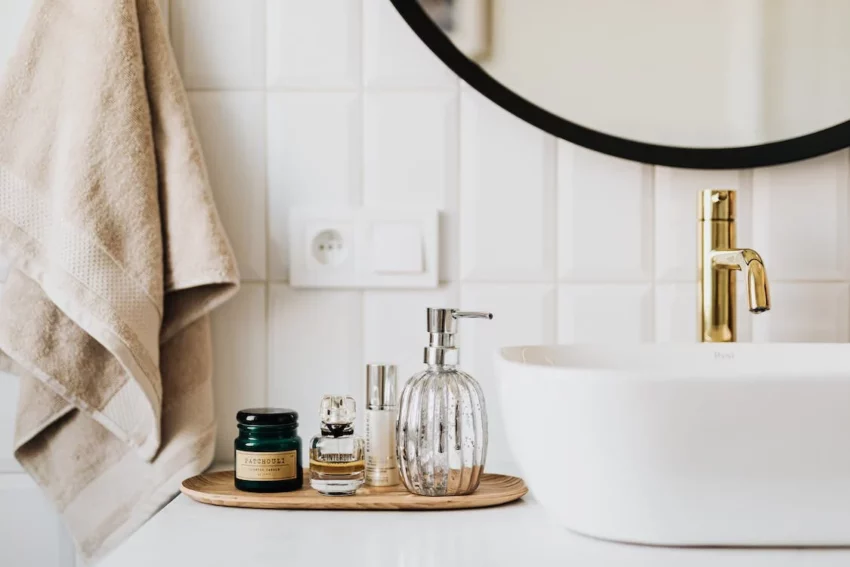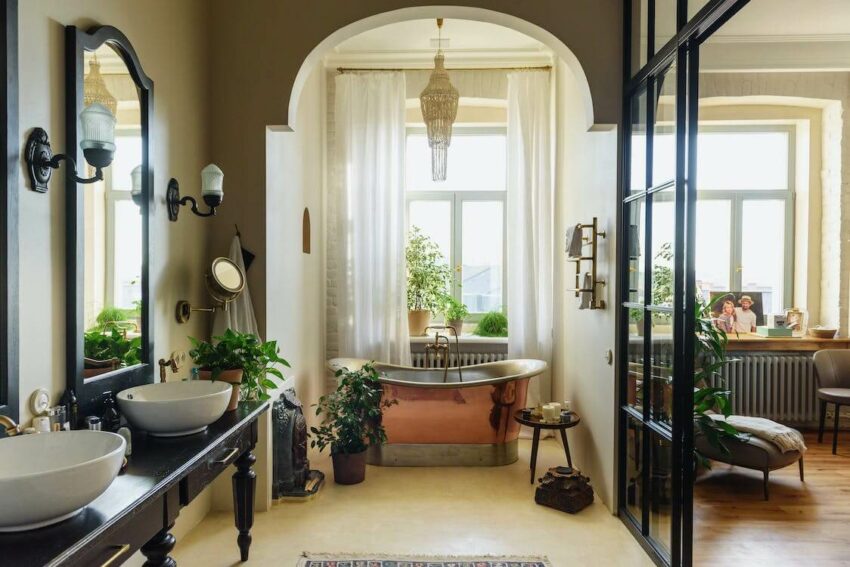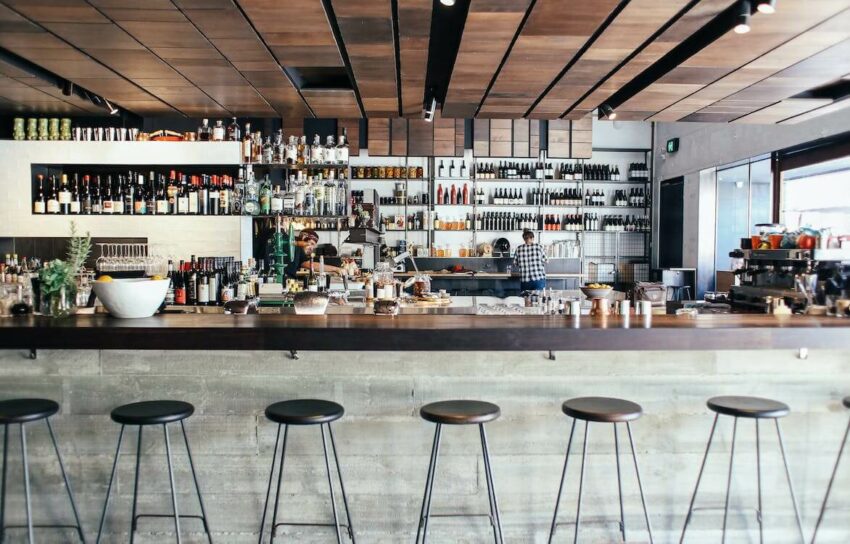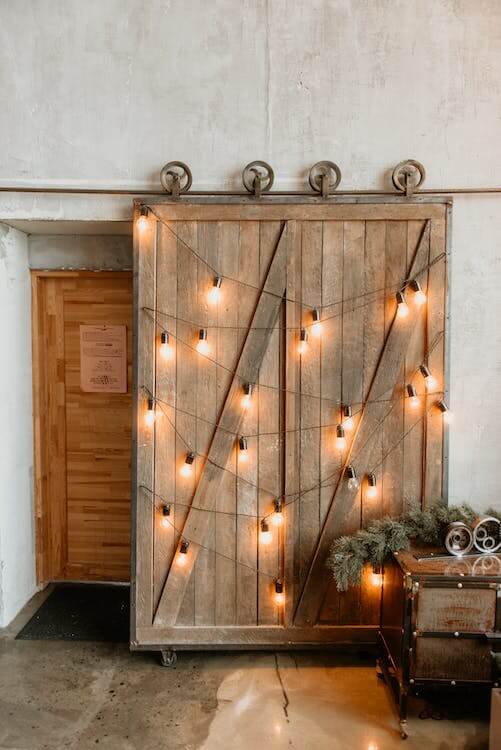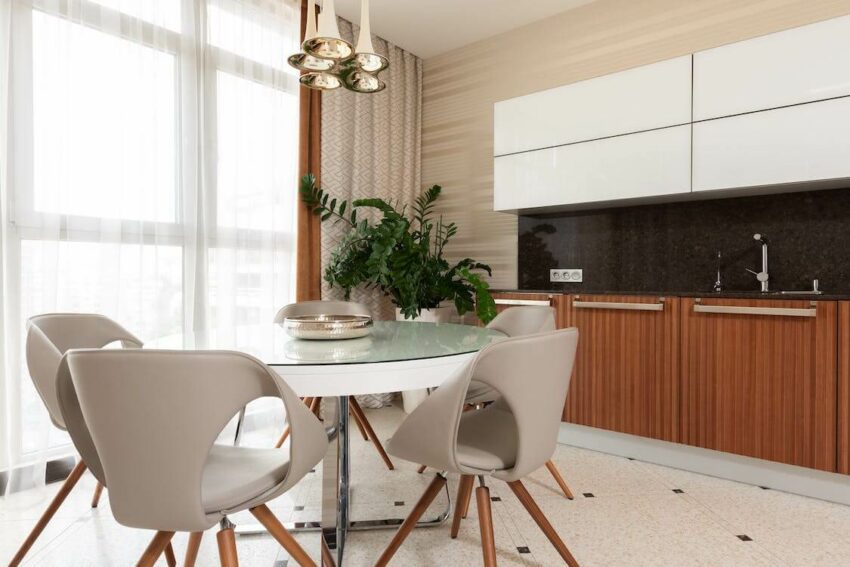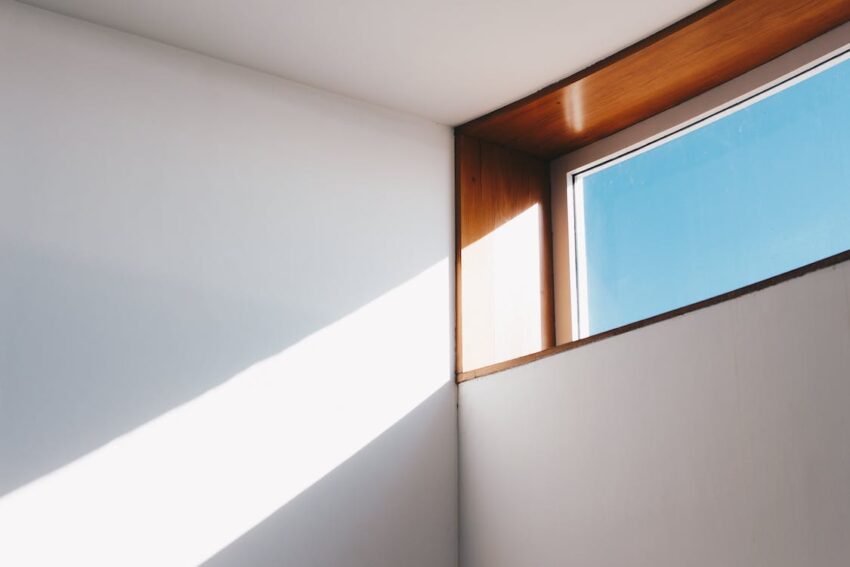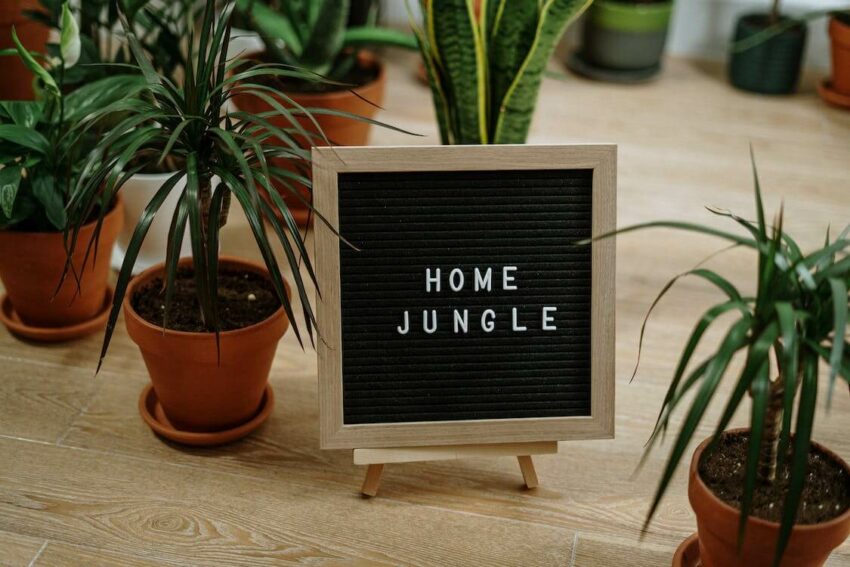“Bringing Beauty and Comfort to Your Home with Modern Aesthetics and Interior Design”
Modern Aesthetics and Interior Design is a field of design that focuses on creating aesthetically pleasing and functional interior spaces. It is a combination of art and science, as it requires an understanding of both the visual and practical aspects of design.
Modern Aesthetics and Interior Design is a creative process that involves the use of color, texture, lighting, furniture, and other elements to create a space that is both visually appealing and practical.
It is a field that is constantly evolving, as new trends and technologies are constantly being introduced. Modern Aesthetics and Interior Design is an important part of creating a comfortable and inviting home or office space.

What Defines Modern Aesthetics
Modern aesthetics is a term used to describe the visual appeal of contemporary art, design, and architecture. It is characterized by a focus on minimalism, simplicity, and functionality. Modern aesthetics often feature clean lines, geometric shapes, and neutral colors. The goal of modern aesthetics is to create a sense of balance and harmony in the environment. It is often seen as a reflection of the modern lifestyle, which values efficiency and practicality. Modern aesthetics can be seen in many different forms, from furniture and interior design to fashion and graphic design. It is a style that is constantly evolving and adapting to the changing needs of society.
The Latest Trends in Modern Interior Aesthetics
The modern interior aesthetic is all about creating a space that is both stylish and comfortable. From sleek and minimalistic designs to bold and vibrant colors, there are plenty of ways to make your home look and feel modern. Here are some of the latest trends in modern interior aesthetics that you can incorporate into your home.
One of the biggest trends in modern interior aesthetics is the use of natural materials. Wood, stone, and metal are all popular choices for creating a modern look. These materials can be used to create a warm and inviting atmosphere, while still maintaining a modern aesthetic.
Another popular trend is the use of bold colors. Bright colors like yellow, orange, and pink can be used to create a vibrant and energetic atmosphere. You can also use neutral colors like white, gray, and black to create a more calming and sophisticated look.
Geometric shapes are also becoming increasingly popular in modern interior aesthetics. Geometric shapes can be used to create interesting patterns and designs that will add a unique touch to your home.

Finally, modern interior aesthetics are all about creating a space that is both functional and aesthetically pleasing. Furniture pieces that are both comfortable and stylish are essential for creating a modern look. Look for pieces that are both comfortable and stylish, such as sectional sofas, ottomans, and accent chairs.
These are just a few of the latest trends in modern interior aesthetics. With a little bit of creativity and imagination, you can create a modern and stylish space that is both comfortable and aesthetically pleasing.
Famous Examples of Modern Aesthetics
Modern aesthetics encompass a wide range of styles that reflect contemporary trends and influences. Here are some famous examples of modern aesthetics:
- Minimalism: Minimalism is a popular modern aesthetic that emphasizes simplicity, clean lines, and a minimalist approach to design. Brands like Apple are known for their minimalist product designs, characterized by sleek surfaces, minimal ornamentation, and a focus on functionality.
- Scandinavian Design: Scandinavian design is renowned for its modern and functional approach, combining simplicity, natural materials, and light color palettes. Brands like IKEA and HAY are famous for their Scandinavian-inspired furniture and home decor, featuring clean lines, minimalism, and a focus on practicality.
- Industrial: The industrial aesthetic draws inspiration from factories, warehouses, and urban environments. It features exposed brick walls, raw materials like metal and concrete, utilitarian furniture, and a blend of rustic and modern elements. The popularity of industrial aesthetics can be seen in spaces like trendy loft apartments and urban cafes.
- Mid-Century Modern: Mid-century modern design refers to the style popularized during the mid-20th century, characterized by clean lines, organic forms, and a mix of materials like wood, plastic, and metal. Famous designers like Charles and Ray Eames and Arne Jacobsen created iconic furniture pieces that define this aesthetic.
- Retro and Vintage: The modern aesthetic often incorporates elements of retro and vintage styles, such as the 1970s bohemian vibes or the colorful patterns of the 1980s. Retro-inspired clothing, furniture, and accessories have gained popularity, with brands like Urban Outfitters embracing a modern take on vintage aesthetics.
- Urban and Streetwear: Urban and streetwear aesthetics have become dominant in modern fashion, particularly influenced by hip-hop and skate cultures. Brands like Supreme and Off-White showcase this aesthetic, characterized by bold graphics, oversized silhouettes, and a mix of high-end and casual elements.
- Futuristic and High-Tech: With the rapid advancement of technology, futuristic and high-tech aesthetics have gained popularity. Sleek, minimalistic designs with glossy surfaces, LED lighting, and innovative materials are seen in products like smartphones, smart home devices, and futuristic concept cars.
- Eclectic and Mash-Up: The modern aesthetic often embraces an eclectic mix of styles and influences. Mash-up aesthetics combine elements from various eras and cultures, creating a unique and personalized look. This approach can be seen in interior design, fashion, and art, where different styles and elements are combined to create a visually dynamic and contemporary aesthetic.

These examples represent some of the diverse modern aesthetics that have gained popularity in recent years. The modern aesthetic is constantly evolving, reflecting the contemporary cultural landscape and technological advancements.
Incorporating Natural Elements into Modern Interior Design
Modern interior design is all about creating a space that is both stylish and comfortable. Incorporating natural elements into your modern interior design can help to create a space that is both beautiful and inviting. Natural elements can add texture, color, and warmth to a room, making it feel more inviting and cozy.
One way to incorporate natural elements into your modern interior design is to use natural materials. Wood, stone, and bamboo are all great options for adding texture and warmth to a room. Wood can be used for furniture, flooring, and even wall coverings. Stone can be used for countertops, backsplashes, and even wall coverings. Bamboo can be used for flooring, furniture, and even wall coverings.
Another way to incorporate natural elements into your modern interior design is to use plants. Plants can add color, texture, and life to a room. They can also help to purify the air and make a room feel more inviting. Choose plants that are easy to care for and that will thrive in the environment of your home.
Finally, you can incorporate natural elements into your modern interior design by using natural light. Natural light can help to create a warm and inviting atmosphere in a room. You can use large windows to let in natural light, or you can use skylights or solar tubes to bring in natural light from the outside.
Incorporating natural elements into your modern interior design can help to create a space that is both stylish and comfortable. Natural materials, plants, and natural light can all help to create a warm and inviting atmosphere in your home. With a little creativity, you can create a modern interior design that is both beautiful and inviting.

Budget Modern Interior Aesthetic Ideas
Embrace Minimalism:
Minimalism is a great way to create a modern interior aesthetic. Choose furniture pieces that are simple and streamlined, and opt for neutral colors like white, black, and gray.
Add a Pop of Color:
To add a modern touch to your interior, add a pop of color with a bright accent wall or piece of furniture. This will help to create a vibrant and inviting atmosphere.
Incorporate Natural Elements:
Natural elements like wood, stone, and plants can help to create a modern interior aesthetic. Incorporate these elements into your design to add texture and warmth to the space.
Use Mirrors:
Mirrors are a great way to create the illusion of more space and light in a room. Place a large mirror on a wall to reflect light and make the room appear larger.
Invest in Quality Lighting:
Quality lighting is essential for creating a modern interior aesthetic. Invest in statement lighting pieces that will add a touch of sophistication to the space.
Incorporate Artwork:
Artwork is a great way to add personality to a room. Choose artwork that reflects your style and adds a modern touch to the space.

History of Modern Aesthetics
The history of modern aesthetics is a complex and diverse journey that encompasses various artistic movements, philosophical theories, and cultural shifts. Here is a broad overview of the history of modern aesthetics:
- Enlightenment and Romanticism (18th-19th centuries): The Enlightenment period emphasized reason, rationality, and a scientific approach to understanding the world. This influenced aesthetics by promoting the idea of art as a means to educate and uplift society. Romanticism, on the other hand, focused on emotions, individuality, and the sublime, valuing personal expression and the beauty of nature.
- Industrial Revolution and Arts and Crafts Movement (19th century): The Industrial Revolution brought about significant social and technological changes. The Arts and Crafts Movement emerged as a response to the mass-produced and often soulless objects of industrialization. This movement emphasized the value of craftsmanship, traditional techniques, and the integration of art into everyday life.
- Modernism (late 19th to mid-20th century): Modernism encompassed a wide range of artistic movements, including Impressionism, Cubism, Fauvism, Dadaism, and Surrealism. Modernist aesthetics sought to break away from traditional conventions, challenging the idea of representational art and exploring new forms, materials, and ideas. The focus was on innovation, experimentation, and pushing the boundaries of artistic expression.
- Bauhaus and Functionalism (early 20th century): The Bauhaus, a German art school founded in 1919, played a significant role in shaping modern aesthetics. It sought to unite art, craft, and industry, promoting functional design and the integration of art into everyday life. The Bauhaus approach emphasized simplicity, practicality, and the use of modern materials.
- Postmodernism (mid-20th century onwards): Postmodernism emerged as a reaction to the perceived limitations and rigidity of modernism. It embraced eclecticism, irony, and a rejection of grand narratives. Postmodern aesthetics celebrated pluralism, pastiche, and the blurring of boundaries between art forms and styles. It challenged the notion of artistic originality and highlighted the role of cultural and historical context.
- Contemporary Aesthetics (late 20th century to present): Contemporary aesthetics encompasses a wide range of styles, approaches, and theories that reflect the diversity of our globalized and technologically driven society. It includes the revival of traditional craftsmanship, the exploration of digital and interactive art, the fusion of cultural influences, and the growing focus on sustainability and social engagement in art and design.
Throughout history, modern aesthetics have been influenced by societal, cultural, and technological changes, as well as philosophical debates about the nature and purpose of art. The quest for innovation, self-expression, and the search for new forms of beauty continue to shape the evolution of modern aesthetics.

Architects Known for Modern Aesthetics
Several architects have played a significant role in shaping modern aesthetics in the field of architecture. Here are some notable architects known for their contributions to modern aesthetics:
- Ludwig Mies van der Rohe (1886-1969): Mies van der Rohe was a German-American architect who is often associated with the phrase “less is more.” He championed minimalism and simplicity in his designs, emphasizing clean lines, open spaces, and the use of modern materials like glass and steel. His iconic works include the Farnsworth House and the Seagram Building.
- Le Corbusier (1887-1965): Le Corbusier, a Swiss-French architect and designer, was a pioneer of modern architecture. He believed in the functional and efficient use of space, using new construction technologies and materials such as reinforced concrete. His influential works include Villa Savoye, the Unité d’Habitation, and the Chandigarh Capitol Complex.
- Frank Lloyd Wright (1867-1959): Frank Lloyd Wright was an American architect known for his organic architecture approach, integrating buildings with their natural surroundings. He emphasized a harmony between the built environment and nature, using materials like wood and stone. Notable works by Wright include Fallingwater, the Guggenheim Museum, and the Robie House.
- Alvar Aalto (1898-1976): Alvar Aalto was a Finnish architect and designer who combined modernist principles with a humanistic approach. He incorporated organic forms and natural materials into his designs, promoting a harmonious relationship between architecture and its users. Key works by Aalto include the Finlandia Hall and the Paimio Sanatorium.
- Walter Gropius (1883-1969): Walter Gropius, a German architect and founder of the Bauhaus school, played a significant role in the development of modern architecture. He emphasized the integration of art, craft, and technology and believed in the social responsibility of architecture. His notable works include the Bauhaus building in Dessau and the Fagus Factory.
- Oscar Niemeyer (1907-2012): Oscar Niemeyer, a Brazilian architect, was a key figure in the development of modern architecture in Latin America. He embraced curved and sculptural forms, creating dynamic and expressive buildings. His most famous work is the futuristic architecture of Brasília, the capital city of Brazil.
- Tadao Ando (born 1941): Tadao Ando is a Japanese architect known for his minimalist designs that incorporate natural light, concrete, and geometric forms. He creates serene and contemplative spaces, often blending traditional Japanese aesthetics with modernist principles. Notable projects by Ando include the Church of the Light, the Chichu Art Museum, and the Pulitzer Arts Foundation.
These architects have left a lasting impact on modern aesthetics in architecture, influencing the principles of minimalism, functionality, integration with nature, and the use of innovative materials. Their works continue to inspire and shape contemporary architectural practices.

Conclusion
Modern Aesthetics and Interior Design have become increasingly popular in recent years, as people strive to create a unique and stylish look for their homes. By combining modern elements with traditional design, homeowners can create a space that is both aesthetically pleasing and functional. With the right combination of materials, colors, and textures, modern aesthetics and interior design can create a space that is both inviting and stylish. With the right guidance, homeowners can create a space that is both beautiful and comfortable.





